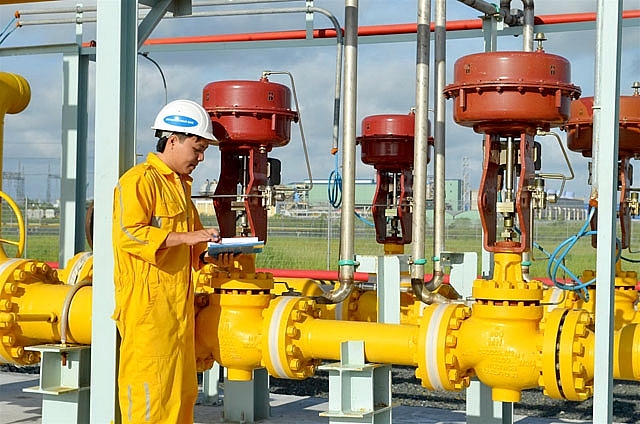ICAEW: Southeast Asia’s GDP growth to contract in 2020
 |
| The ICAEW report predicted that recovery prospects looked brightest for Vietnam |
The Global Economic Outlook report from Oxford Economics, commissioned by chartered accountancy body ICAEW, suggests that while economic activities are picking up again and growth is expected to eventually rebound to 6.4 per cent in 2021, the pace of recovery over the second half of 2020 will vary across the region, depending on the easing of lockdown restrictions and improved export demand.
The COVID-19 outbreak reduced global GDP by around 9 per cent in the first half of 2020, at least three times the size of the 2007-2009 global financial crisis. Despite a very strong rebound in the third quarter of 6.4 per cent, the report suggests that world GDP will contract overall by 4.4 per cent in 2020.
However, there is momentum building in the second half of 2020, which will drive growth to 5.8 per cent in 2021, and lead the global economy to recover to its pre-crisis peak by the midpoint of next year, a similar time frame as the post-2008 financial crisis recovery.
| The strength of the rebound in economic activities over the coming quarters in Southeast Asia remains uncertain, particularly in the fourth quarter of 2020, after the expected initial strong bounce in global trade and domestic activity post-lockdowns has faded. |
The strength of the rebound in economic activities over the coming quarters in Southeast Asia remains uncertain, particularly in the fourth quarter of 2020, after the expected initial strong bounce in global trade and domestic activity post-lockdowns has faded.
Additionally, varying success rates in containing the COVID-19 pandemic, and differing lockdown exit strategies will widen the disparities in economic growth in the region. Economies which have convincingly contained the outbreak such as Thailand and Vietnam will see a stronger recovery than Indonesia and the Philippines, which are battling new waves of COVID-19 after restrictions were prematurely relaxed.
According to the fresh record, while growth in Singapore is forecast to contract by 5.7 per cent this year because of a severe decline in global trade, signs of a recovery in exports and imports will see it rebound to 6.1 per cent in 2021. Heavily export-oriented economies like Singapore and Vietnam will continue to benefit from a stabilisation in trade indicators, shown by recent improvements in exports over the past few months.
The report predicted that recovery prospects looked brightest for Vietnam, which had contained the virus very effectively until recently. Vietnam is expected to be the only Southeast Asian economy to record positive growth this year with its GDP rising by 2.3 per cent this year, rising to 8 per cent in 2021.
“The road to recovery for economies in Southeast Asia will be a long one, with existing US-China tensions, a long-term slowdown in global trade activity, and a prolonged COVID-19 pandemic weighing on the region’s growth prospects,” said Mark Billington, ICAEW regional director, Greater China and Southeast Asia.
“While each region’s economy has suffered due to the crisis, the unique economic structures mean the crisis has played out in different ways. Ultimately, countries that can strike a balance between resuming economic activity and keeping the outbreak under control will see their economies bounce back faster than the rest.”
The report also shows that Chinese exports should recover but could be affected by ongoing trade tensions whereas slow recovery expected for the Indonesian and Philippines economies.
The situation remains precarious in Indonesia and the Philippines, with infections accelerating again after lockdown restrictions were relaxed, causing reopening plans in these countries to be paused or reversed.
Both economies remain highly vulnerable as they have weaker public health infrastructure, lower levels of fiscal support available, and are much more consumer-driven than others in the region.
What the stars mean:
★ Poor ★ ★ Promising ★★★ Good ★★★★ Very good ★★★★★ Exceptional
 Tag:
Tag:
Related Contents
Latest News
More News
- 72 nations sign landmark Hanoi cybercrime convention (October 26, 2025 | 18:00)
- UN Secretary-General commends Vietnam’s global leadership (October 26, 2025 | 09:00)
- APEC finance ministers convene to tackle regional challenges (October 22, 2025 | 17:31)
- Rewiring global trade: ASEAN’s rise as supply chain hub (October 17, 2025 | 11:40)
- Vietnam attends first World Nuclear Week Forum in Russia (September 26, 2025 | 10:50)
- Vietnam attends 69th session of IAEA General Conference (September 16, 2025 | 10:00)
- ADB, WB pledge over 12 billion USD for ASEAN power grid, renewable energy projects (August 15, 2025 | 14:18)
- Lowy Institute proposes AI-based tobacco control solutions for ASEAN (August 15, 2025 | 14:14)
- Cloud computing policy to position Malaysia as regional hub by 2030 (August 15, 2025 | 14:11)
- Thailand, Cambodia suffer numerous cyber attacks (August 05, 2025 | 16:19)






























 Mobile Version
Mobile Version